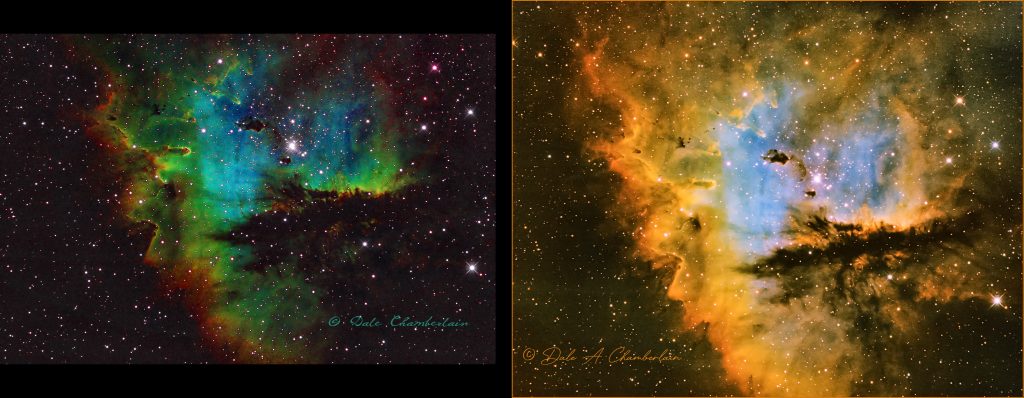While I wait out the weather problems and dome maintenance issues, I’ve been applying some of the new techniques I learned at Kitt Peak to images I’ve previously taken. PixInsight has some new updates too, such as the WeightedBatchPreProcessing script. This allows me to calibrate, register and integrate the subframe data I take with one BIG step. I can also apply weighting to each image based upon FWHM (Full Width Half Medium-how good the focus is), eccentricity (how round the stars are), and signal-to-noise ratio. In addition, the flat frames I take to help calibrate the subframes can now be used with dark-flats instead of the traditional bias frames used in CCD cameras. My cameras are all CMOS and dark-flats are better.
Okay, so enough of the techno-babel. I really would like to show you the before and after comparison of images I’ve taken, namely M 16 Eagle Nebula and NGC 281 PacMan Nebula. The after images are using the WeightedBatchPreProcessing script and the post processing steps I learned from Casey Good at the Intermediate Astrophotography workshop at Kitt Peak Observatory in October.
Please provide some feedback on your preference.

